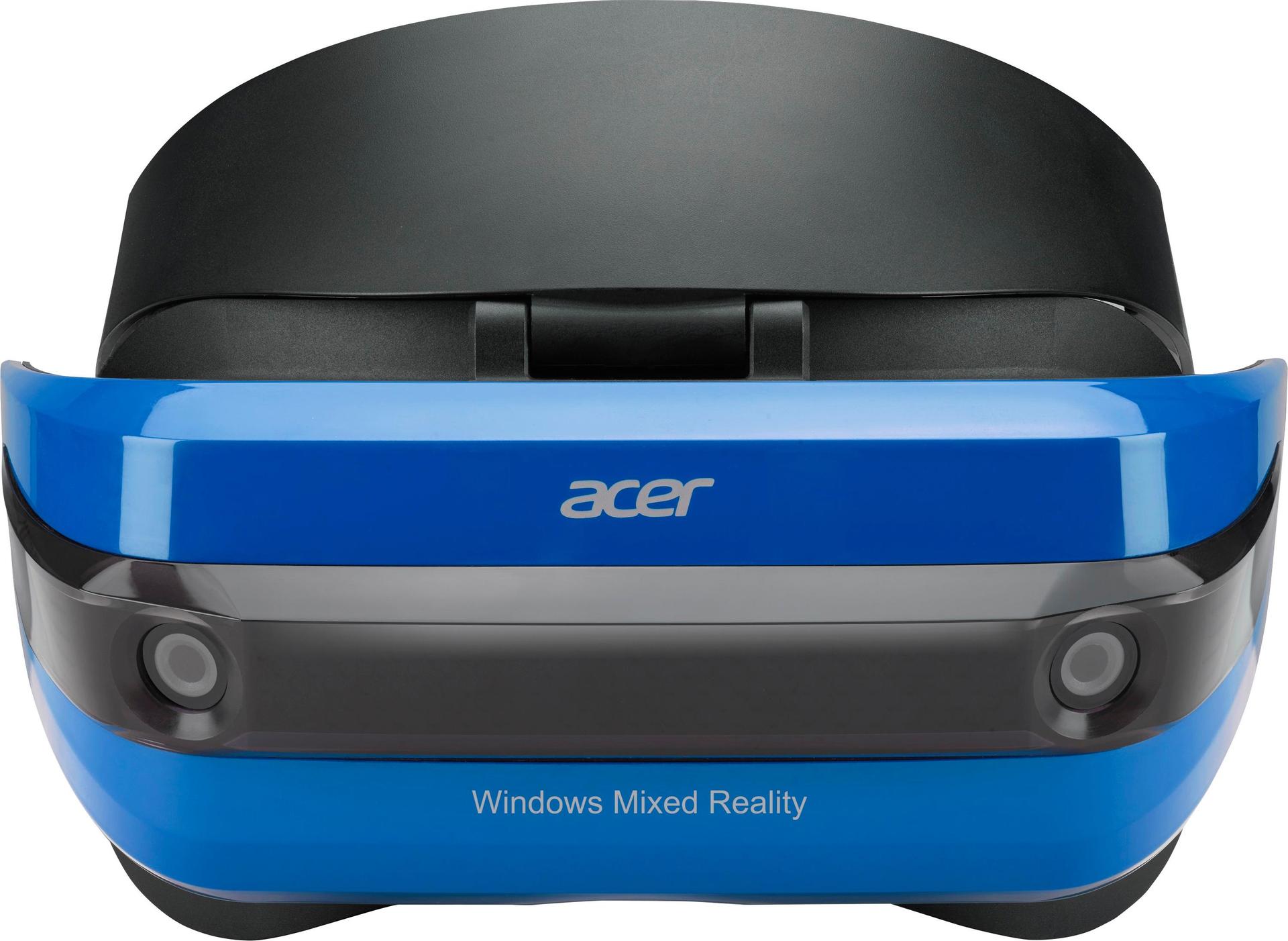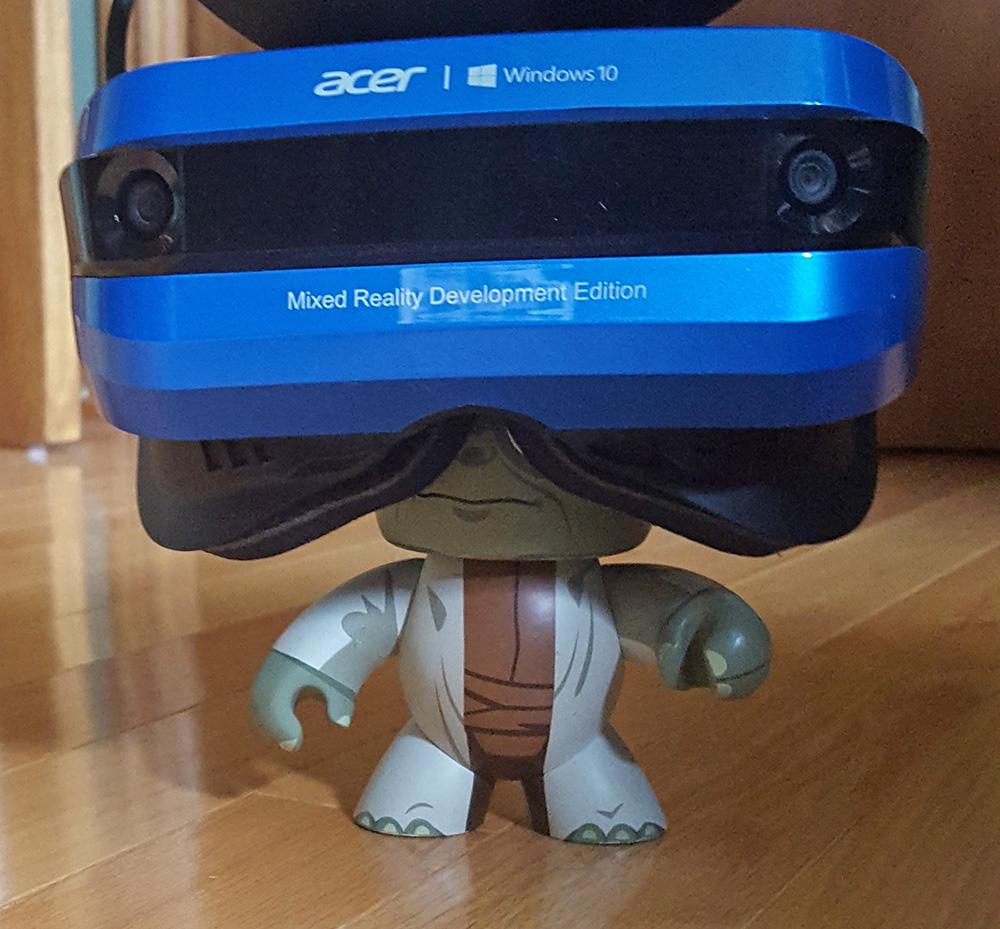Blog
Final Thoughts about the MS/Acer VR headset (I refuse to call it Mixed Reality)
Published on
August 6, 2017
About a week ago I got an Microsoft / Acer VR headset, which MS insists on called “Mixed Reality”. I reviewed it, I took it apart. I made some tests in Unity3D. I emailed MS support. Here are my final thoughts:
Price
It’s cheap. Currently priced at $300. While a few weeks ago I would have considered this incredibly cheap, in light of the Rift’s recent price cut, the cheapness factor has diminished somewhat.
Comfort
The unit is light (which is good) but feels really cheaply constructed. The strap is minimalistic and not very comfortable, consisting almost entirely of hard injection molded plastic. The forehead rest has some cushioning, thank goodness.
Display
The resolution is great, sharp image with lots of detail that just pops right at you. Screen door effect is still there though. It’s hard to compare it to the Rift or Vive. I feel that it’s less pronounced, but that’s entirely subjective. The optics and field-of-view are noticeably inferior to Vive/Rift, with the Acer having a smaller “sweet spot”, lots of blurriness in the borders and a distinct “tunnel vision” effect.
Setup
There is almost none, which is fantastic. The headset plugs into the computer and that’s it. There are no cameras or lighthouses to install. It doesn’t even require external power. The minimal spec is very low, but I haven’t tested how well it functions on a low-end system. I suspect the experience will be greatly diminished.
Tracking
Tracking is good, not as good as the Vive (it’s a bit jittery), but better than any mobile VR headset. Positional tracking is solid. Interestingly, the headset doesn’t function in the dark. Turn off the lights and it will lose tracking.
Content
There is none. I found a demo for the Hololens, and that’s about it. You can “inject” regular 2D UWP apps into your 3D virtual space, as floating screens. While this is really cool to have on a Hololens, I don’t see the point of doing it in VR. Some people might find a use for this feature, to me it’s not very alluring. The display resolution is good, but not good enough to read small text and certainly not as good as my 4K monitor. Also, normal “desktop” software can’t be injected, which rules out 99% of the apps I normally use.
Mixed Reality
Unlike the Hololens, these new “MR” headsets do not have 3D cameras and do not map the environment around them. Furthermore, the two cameras on the front are used for tracking and nothing else. They are not currently accessible via the SDK, and there is no way to get a video feed from them. This is confirmed by a MS rep over email.
Microsoft is pushing new terminology of a “mixed reality spectrum”, it’s just that these headsets are waaaay over on the VR side of things. They “mix” 0% real and 100% virtual. Honestly, I’m disappointed. I was hoping for some kind of poor-man’s Hololens, but it’s really not. If the Acer is a MR headset, then by the same logic so is this:
Development
The Acer headsets requires Unity 2017.2 Beta to build and run custom apps. No other version will work. Being a beta, 2017.2 is very unstable and can be frustrating to work with. I spent a few hours making a simple “hello world” app, consisting of a few floating textured cubes, and I had to restart my system twice. The headset stopped responding completely after the first build attempt. The second time I got a very weird “double vision” effect, where my app was visible twice inside the VR world, one in front and another in the back. I can’t explain that one, because it didn’t happen again after a restart.
Overall it works, but it’s finicky and unstable at the moment.
UWP
Being Microsoft, the headset will only run UWP apps. For anyone hoping for an OpenVR bridge or driver, this is a problem. UWP is all about layering, security and sandboxing. It might be very tricky to convince this headset to run OpenVR or SteamVR applications.
EDIT:
MS announced that these new headsets will support SteamVR, however, this will not happen at launch (Fall 2017). Work on this has just begun, and there is no release date yet.
Conclusion
I love the simplicity of this device, the ease of setup and the display resolution. I don’t like the optics and being stuck with UWP (for now?). I intend on using mine as a mobile demo tool, at least for the time being.
Is it worth buying? I don’t think so. Not yet anyway. For an extra $100 you could get an Oculus Rift, with two controllers and a lot of supported content, apps and games.

